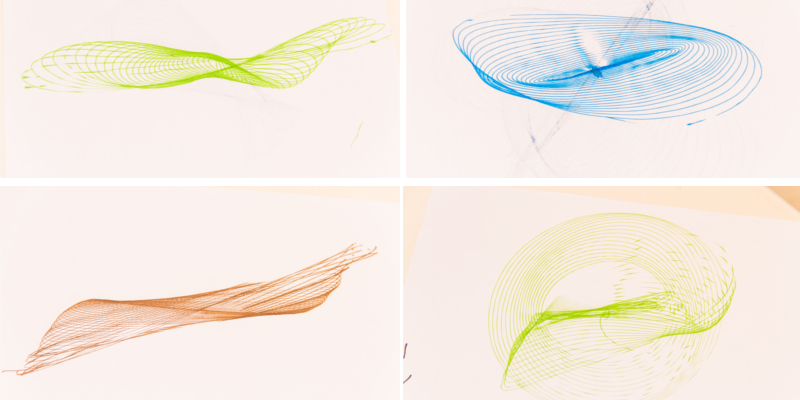HARMONOGRAPH
Beautiful figures appear in this mechanical system, looking like a amusement park swing. Varying the initial conditions of the movement, different tracings on the paper are obtained.
Much more difficult than obtaining beautiful drawings is to mathematically model this apparatus, starting from fundamental physical concepts. For small swings, the system resembles a free pendulum combined with a twist. In this simplification, the center of the board would oscillate approximately as an ellipse, while the angle of twist would oscillate as an sinusoid, both damped by friction.
However, observation shows that, even for small oscillations, these movements are not as independent like that. Note for example that the eccentricity and major axis of the elliptical motion change, facts that are not predicted by the above model.

